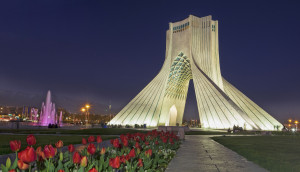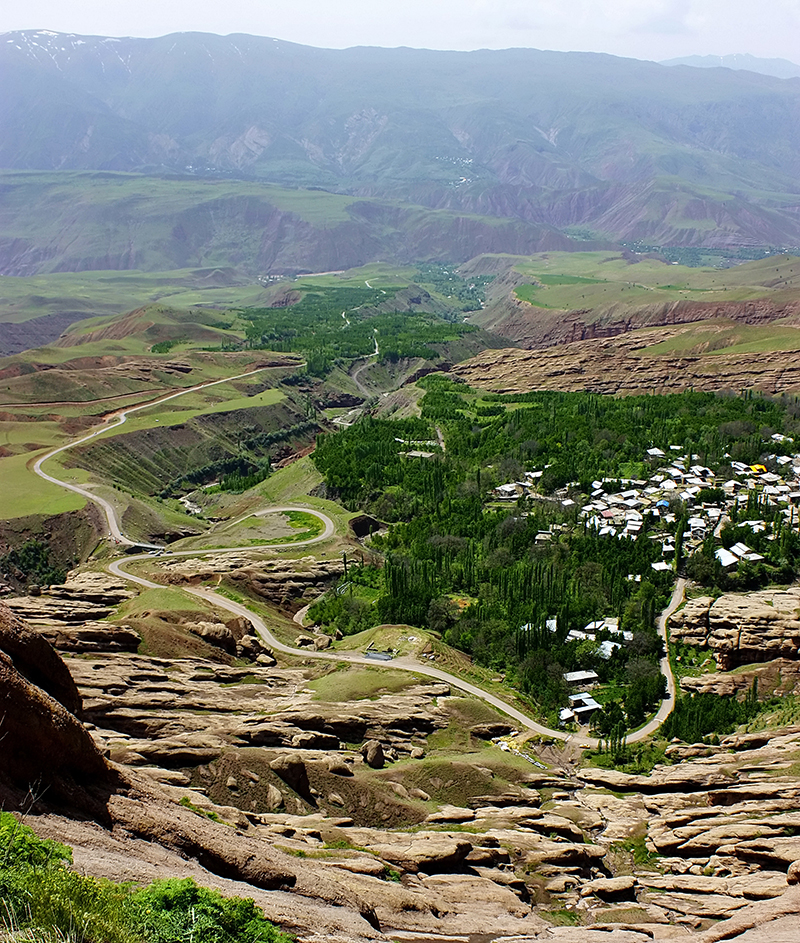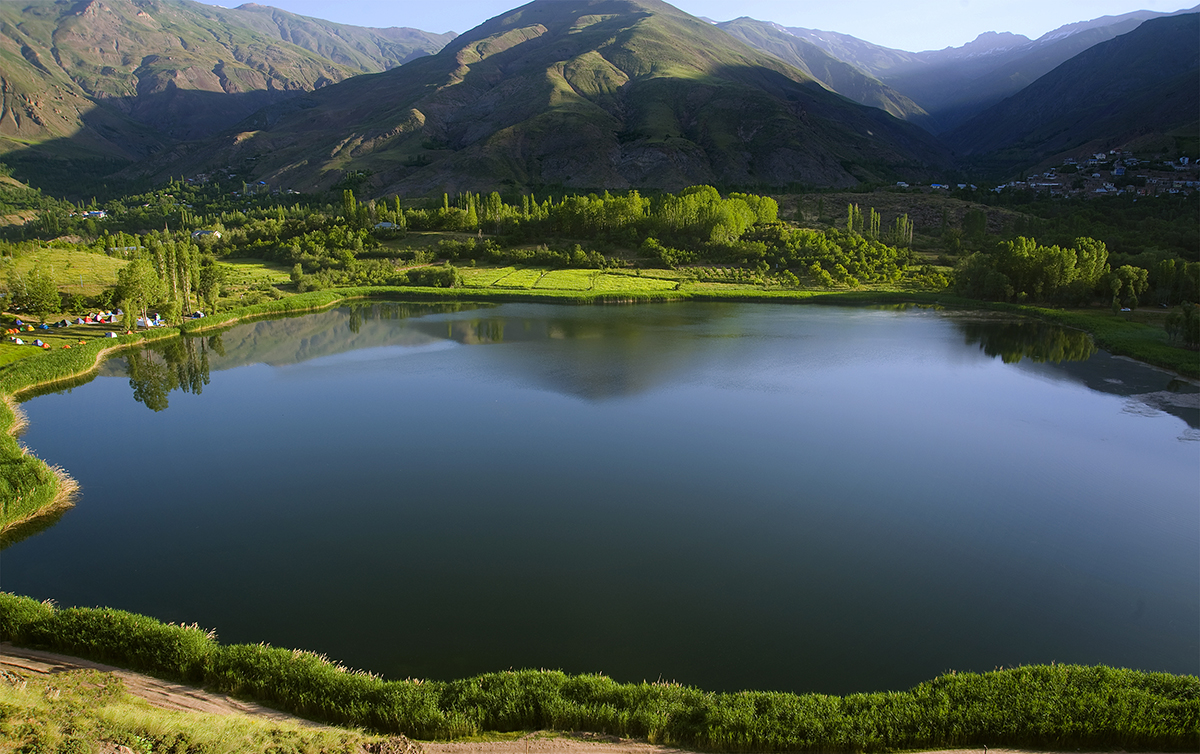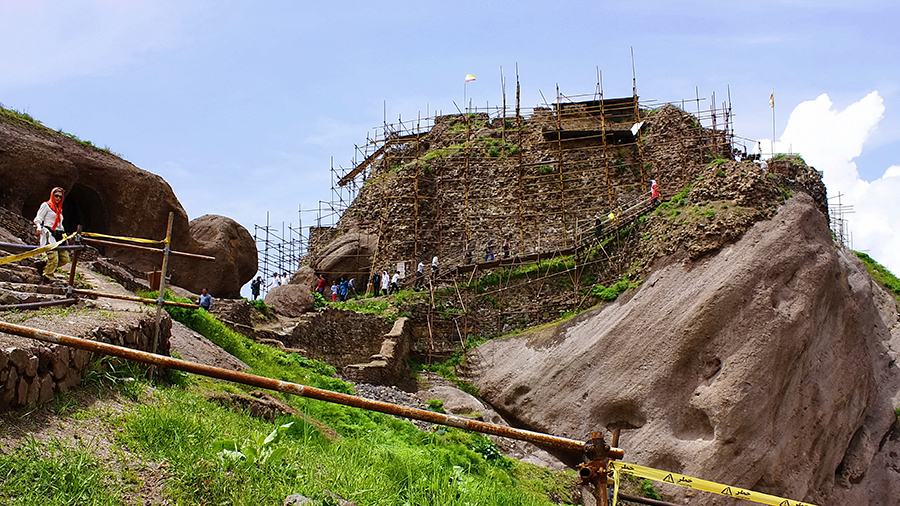
Qazvin, An Adventurous Trip to History

Tehran
Tehran, the Capital of Iran, is located on the south hillside of the Alborz mountain range with the...
Alamut Castle
Alamut castle, one of the unique historical castles in Iran, is located in the northwest of Qazvin province...
Qazvin
Qazvin, one of the big cities in Iran, is located in 130 km west of Tehran in the...
Day 1, the mystical castle


Qazvin is one hundred and fifty kilometers of Tehran, and if you are starting your going there from Tehran, you have a two-hour ride ahead. It is best to start your trip early in the morning. Spend your first day in Alamut district, visit the Castle of Hassan-e Sabah and walk next to the magical lake of Ovan. The exit to the road to Alamut is next to Qazvin tollbooth and you will see the sign Alamut district. The road to Alamut is full of turns and mountainous. You should use a safe speed to prevent any unwanted accident, and yet enjoy the landscapes, too. The distance between the beginning of the road and Alamut district is about one hundred kilometers, and you will reach the beautiful lake of Ovan once you travel this distance.

Ovan is a very beautiful lake on the top of the mountain resembling a unique and amazing miracle. The water from this lake comes from the water springs in the bed, and the lakes and land surrounding it are the habitats of diverse types of fishes and animals. This is, in fact, a no-hunting zone.
After visiting the lake, and having breakfast (you better have it with yourself) in nature, head to the Alamut Castle or Castle of Hassan-e Sabah. You will reach there in less than fifteen minutes. It is a historical castle in the heart of sky-high mountains, more than two thousand kilometers higher than sea level. The castle is built in a strategic area. It leads to a cliff on each side, and there is only one path that leads to the castle. The path has steps that have been later built to facilitate the visit.
This castle is attributed to Hassan-e Sabbah, the founder of Nizari Ismaili state. They were a movement whose activities is still a mystery. Even though a great part of the castle is destroyed and only some parts of it remain today, visiting this majestic castle can be a memorable experience. It is better to have lunch with yourself, too. You will be quite tired and hungry after all the riding and walking.
When you return to Qazvin, all the tourist sites are closed. You can rest in one of the hotels and then go to Khayam Street. It is a crowded street where the shops are open until late hours. You can enjoy the nightlife in this part of the city. You can have dinner in one of the traditional restaurants and enjoy cuisines like Gheyme Nesar, Shirin Polo, and Kuku Shirin.
Day 1, the mystical castle


Qazvin is one hundred and fifty kilometers of Tehran, and if you are starting your going there from Tehran, you have a two-hour ride ahead. It is best to start your trip early in the morning. Spend your first day in Alamut district, visit the Castle of Hassan-e Sabah and walk next to the magical lake of Ovan. The exit to the road to Alamut is next to Qazvin tollbooth and you will see the sign Alamut district. The road to Alamut is full of turns and mountainous. You should use a safe speed to prevent any unwanted accident, and yet enjoy the landscapes, too. The distance between the beginning of the road and Alamut district is about one hundred kilometers, and you will reach the beautiful lake of Ovan once you travel this distance.

Ovan is a very beautiful lake on the top of the mountain resembling a unique and amazing miracle. The water from this lake comes from the water springs in the bed, and the lakes and land surrounding it are the habitats of diverse types of fishes and animals. This is, in fact, a no-hunting zone.
After visiting the lake, and having breakfast (you better have it with yourself) in nature, head to the Alamut Castle or Castle of Hassan-e Sabah. You will reach there in less than fifteen minutes. It is a historical castle in the heart of sky-high mountains, more than two thousand kilometers higher than sea level. The castle is built in a strategic area. It leads to a cliff on each side, and there is only one path that leads to the castle. The path has steps that have been later built to facilitate the visit.
This castle is attributed to Hassan-e Sabbah, the founder of Nizari Ismaili state. They were a movement whose activities is still a mystery. Even though a great part of the castle is destroyed and only some parts of it remain today, visiting this majestic castle can be a memorable experience. It is better to have lunch with yourself, too. You will be quite tired and hungry after all the riding and walking.
When you return to Qazvin, all the tourist sites are closed. You can rest in one of the hotels and then go to Khayam Street. It is a crowded street where the shops are open until late hours. You can enjoy the nightlife in this part of the city. You can have dinner in one of the traditional restaurants and enjoy cuisines like Gheyme Nesar, Shirin Polo, and Kuku Shirin.
Day 2, a walk in the capital of calligraphy

If you wake up early morning, you can have a delicious Halim of Qazvin. Halim is porridge and you do not want to miss this tasteful meal.
Obeid Zakani district is one of the oldest parts of the Qazvin. It has narrow, dark valleys, and old houses. One of the most important and popular buildings of Qazvin, Hamam-e Ghajar (Qajar Bathhouse) is located in this district. This bathhouse is built during the Safavid dynasty and is one of the largest of its kind. Today, it has turned into the Ethnography Museum of Qazvin.


After visiting the bathhouse, go to Hosseinieh Aminiha, a grand and noble house that has now been endowed and turned into a hosseinieh. This house has very magnificent architecture, and three halls parallel to each other. Colorful sash windows have separated them all. There is a basement where the members of the house rested during the summertime. One of the most interesting points about this house is that there is a corridor with a low ceiling in the basement that allowed the servants to come and go without disturbing the rest of the people
Your next destination can be Chehelsotun Mansion. It is a Safavid building and the Chehelsotun Palace of Isfahan was built inspired by it. It is a two-story building decorated with beautiful paintings. Now it has turned into a Museum of Calligraphy. Once you visit it, you will realize why Qazvin is called the capital of calligraphy of Iran. Many of the well-known calligraphy artists have emerged from Qazvin.
Cantor Church, the smallest orthodox church of Iran, will not take much of your time. Next, you can visit Sardar-e Bozorg Ab Anbar. This Ab Anbar once provided a part of the water of this historical city. Then, you can visit Sepah Street. It is the first street that was engineered. Shah Tahmasp I built and named it “Khiyaban” after the place where he lived in Haraat. This beautiful street is now paved. As you walk this street, you can visit Masjid Jama or Atigh Mosque. It is a beautiful structure built on the remaining of a Sassanid fire temple. It has an amazing architecture with mesmerizing tile works and bricks.
Now, you should be very tired and hungry. After having lunch, go to the bazaar. Some parts of the bazaar may be closed on weekends, but do not miss walking through the shops and markets, such as carpets shops, Hindu caravanserais, and Sa’dolsaltaneh Pass.
There are still some other historical sites. It will make you too tired to visit all of them in one trip. You can use them as a reason for another trip to Qazvin. But if you still have time, you can go to Barajin Forest Park located two kilometers north of Qazvin. There are different attractions such as a robotic park, summer movies, grass ground, bicycle route, theme park, tourist gazebos, playground, teahouse, restaurant, and many more for you to enjoy.